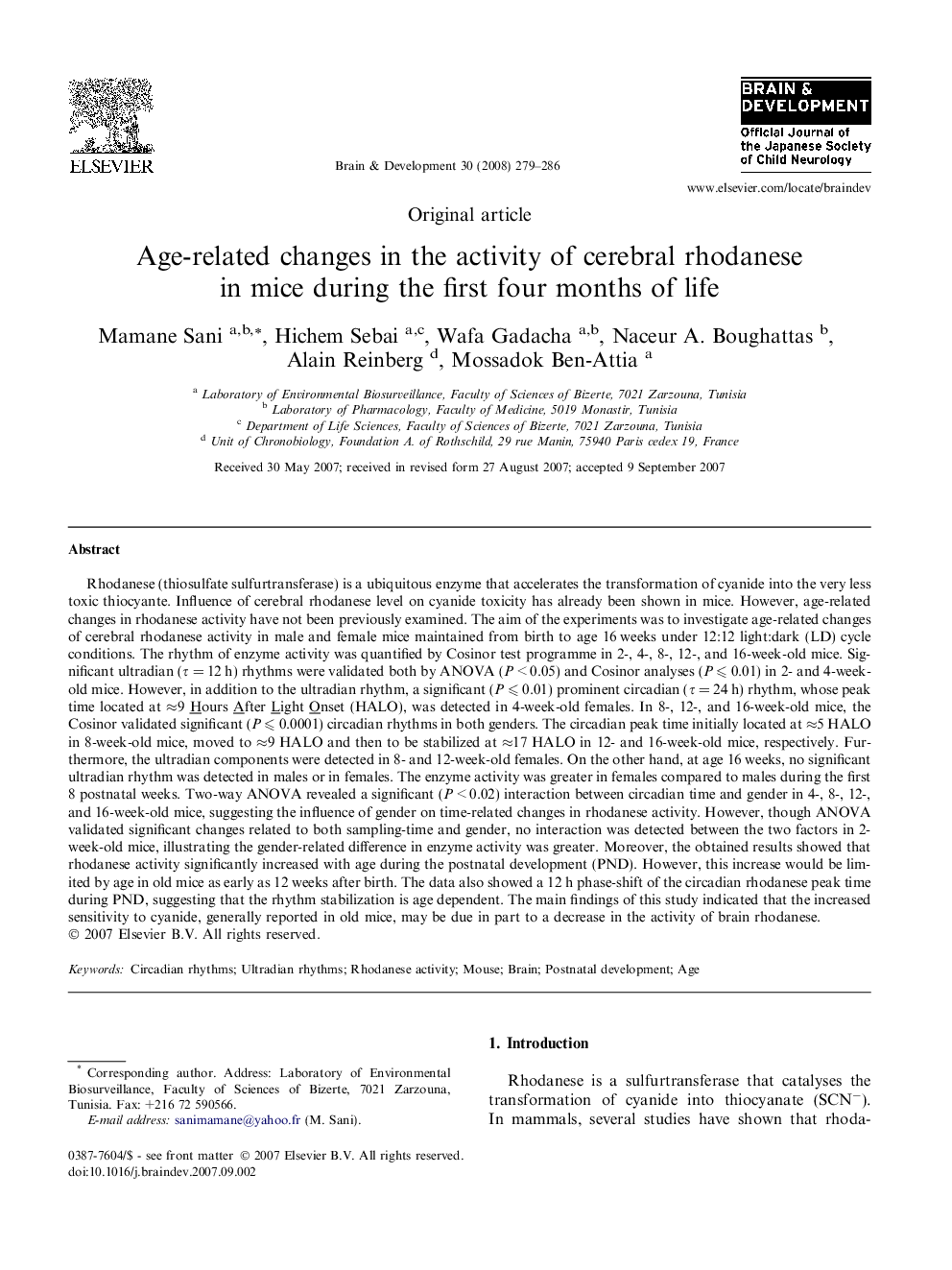| کد مقاله | کد نشریه | سال انتشار | مقاله انگلیسی | نسخه تمام متن |
|---|---|---|---|---|
| 3038304 | 1184458 | 2008 | 8 صفحه PDF | دانلود رایگان |

Rhodanese (thiosulfate sulfurtransferase) is a ubiquitous enzyme that accelerates the transformation of cyanide into the very less toxic thiocyante. Influence of cerebral rhodanese level on cyanide toxicity has already been shown in mice. However, age-related changes in rhodanese activity have not been previously examined. The aim of the experiments was to investigate age-related changes of cerebral rhodanese activity in male and female mice maintained from birth to age 16 weeks under 12:12 light:dark (LD) cycle conditions. The rhythm of enzyme activity was quantified by Cosinor test programme in 2-, 4-, 8-, 12-, and 16-week-old mice. Significant ultradian (τ = 12 h) rhythms were validated both by ANOVA (P < 0.05) and Cosinor analyses (P ⩽ 0.01) in 2- and 4-week-old mice. However, in addition to the ultradian rhythm, a significant (P ⩽ 0.01) prominent circadian (τ = 24 h) rhythm, whose peak time located at ≈9 Hours After Light Onset (HALO), was detected in 4-week-old females. In 8-, 12-, and 16-week-old mice, the Cosinor validated significant (P ⩽ 0.0001) circadian rhythms in both genders. The circadian peak time initially located at ≈5 HALO in 8-week-old mice, moved to ≈9 HALO and then to be stabilized at ≈17 HALO in 12- and 16-week-old mice, respectively. Furthermore, the ultradian components were detected in 8- and 12-week-old females. On the other hand, at age 16 weeks, no significant ultradian rhythm was detected in males or in females. The enzyme activity was greater in females compared to males during the first 8 postnatal weeks. Two-way ANOVA revealed a significant (P < 0.02) interaction between circadian time and gender in 4-, 8-, 12-, and 16-week-old mice, suggesting the influence of gender on time-related changes in rhodanese activity. However, though ANOVA validated significant changes related to both sampling-time and gender, no interaction was detected between the two factors in 2-week-old mice, illustrating the gender-related difference in enzyme activity was greater. Moreover, the obtained results showed that rhodanese activity significantly increased with age during the postnatal development (PND). However, this increase would be limited by age in old mice as early as 12 weeks after birth. The data also showed a 12 h phase-shift of the circadian rhodanese peak time during PND, suggesting that the rhythm stabilization is age dependent. The main findings of this study indicated that the increased sensitivity to cyanide, generally reported in old mice, may be due in part to a decrease in the activity of brain rhodanese.
Journal: Brain and Development - Volume 30, Issue 4, April 2008, Pages 279–286